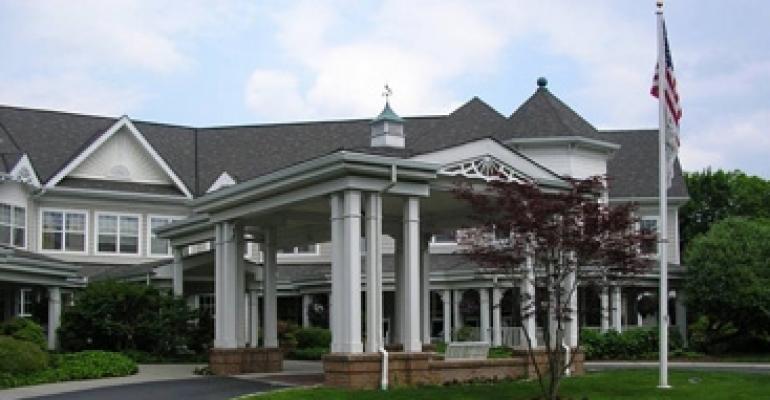
Some of the best brand names in seniors housing recently have grabbed their share of unfavorable headlines. Financial problems have been widely reported at Sunrise Senior Living, Erickson Retirement Communities and Sunwest Management. The string of bad news for these owners and operators raises the question of whether other big companies could be headed for trouble.
"Some will say these problems are a black eye for the industry," says Kevin McMeen, president at Chicago-based MidCap Financial. "But it's better to get this behind us, so there's not a dark cloud hanging over the sector."
The three troubled companies are addressing their problems. Sunrise Senior Living recently received an extension of its bank loan until the end of next year. Sunrise also sold 21 assisted living properties to Brookdale Senior Living for $204 million (see related story here).
Erickson, which expanded rapidly in the last few years, filed for Chapter 11 bankruptcy in October, but, at the same time announced the sale of the company to a new investor, Redwood Capital Investments.
Sunwest, meanwhile, is in the midst of a bankruptcy and restructuring. The move could result in the $1.2 billion sale of the bulk of its holdings, or 150 buildings, to an investor group that includes Dan Baty, co-CEO at Emeritus Senior Living.
"I don't think other big shoes will drop," says Robert Mains, research analyst at Morgan Keegan in Saratoga Springs, N.Y., referring to other large companies that might fail.
Real estate investment banking firm Savills recently analyzed the top 50 seniors housing companies and found signs of improvement among most investor groups. The real estate investment trusts have raised capital and are looking for buildings to buy. Besides Sunrise, the publicly traded companies are growing.
Brookdale, for instance, completed a $164 million public offering last June, which was used to repay $125 million of outstanding debt. Brookdale's stock closed at $16.02 on Nov. 19. The stock hit a 52-week low of $2.50 last spring. Meanwhile, publicly traded Emeritus is still on a buying spree. The company has purchased 64 properties over the past two years.
While the condition of privately held companies is harder to judge, operators should benefit if occupancies rise and the supply of new product remains constrained, says Meredith Oppenheim, senior vice president at Savills in New York.
Who’s at risk?
Non-profit owners and operators with continuing care retirement communities (CCRCs) could face more trouble, say industry experts. The bond financing that these owners rely on is constrained and the residential housing market remains weak. New CCRCs aimed at middle-income buyers are especially at risk because of falling home values. "These operators could have a lot of exposure," says Oppenheim.
Regional and small private operators may continue to experience problems, observers say. Loans three to five years in length taken out during the boom years of 2004 through 2007 are coming due within the next 12 months. (No one interviewed for this story tracks seniors housing debt maturity dates.)
Some borrowers will find it difficult to refinance their loans, so lenders will "extend and pretend," says Alan McMurtry, director at CLW Health Care Service Group, a brokerage company in Tampa. As he explains it, a current loan will be extended for six to 12 months while the lender hopes that the capital markets and real estate fundamentals improve.
"Banks are really reluctant to foreclose," notes McMurtry. Lenders don't want to operate buildings for seniors, especially properties where residents need medical care.
At the same time, Fannie Mae and Freddie Mac will continue to be the dominant source of mortgage funds for stabilized properties. These government-sponsored entities have tightened their terms somewhat, sources say, but still provide a lending source not available to the other commercial real estate sectors.
Investors hold the key
Looking ahead, another question is whether the problems at the big companies have damaged the reputation of the entire sector — a situation that could scare away new investors. "There's potential spillover to the whole industry," says Robert Kramer, president at the National Investment Center for the Seniors Housing & Care Industry (NIC). "There's a lot of capital on the sidelines waiting to see what happens."
Kramer notes that a new NIC report, the details of which were expected to be released Nov. 30, shows that occupancies at assisted living buildings are climbing again, and that the occupancy rate nationally at independent living buildings has stabilized after seven consecutive quarters of decline.
Rent growth in seniors housing has remained positive, too. "The comparative case for seniors housing is good," says Kramer. "Our indicators are showing that we have reached the trough at a time when other commercial real estate sectors are dealing with negative rent growth and bracing for the worst in terms of occupancy."

